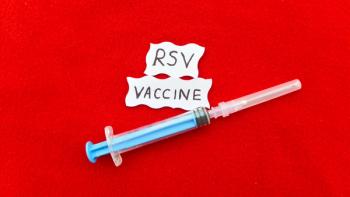
Syringe Services Programs Reduces HIV, Hepatitis C Among Injection Drug Users
Study finds syringe services outreach should be more focused on whites, who now make up a large portion of injection drug users.
People who inject drugs (PWID) are at a significantly higher risk of contracting HIV, hepatitis B and hepatitis C, and other infections from sharing needles and syringes. Approximately 1 in 10 new cases of HIV are among PWID.
The CDC reported that new cases of HIV among black and Hispanic/Latino PWID dropped by 50% between 2008 to 2014, while new cases among white PWID decreased 28%, according to a new CDC Vital Signs report.
It is believed that syringe service programs (SSPs) have played a large role in preventing new incidences of HIV, hepatitis, and other infections among PWID. These programs provide patients with many more resources than just clean syringes, such as services to stop substance misuse; testing and treatment for HIV, hepatitis B and hepatitis C; education about overdoses; and other prevention services, according to the CDC.
While critics of these programs may argue that they encourage injection drug use, they actually have been found to reduce transmission of HIV, and other costly infections that could eventually be fatal. The CDC reported that more than half of PWID used SSPs in 2015, but only 1 in 4 received all of their syringes from these programs.
A challenge lawmakers and healthcare professionals face when trying to control new cases of infections is the fact that there have been changes in the demographics of injection drug users.
In 2005, blacks and whites each accounted for 38% of new PWID, while in 2015, blacks accounted for 19% and whites made up 54%. This change is likely due to a 114% increase in heroin use among whites in recent years, according to the CDC.
This
Expanding SSPs, along with other initiatives, are significant, because the CDC reported that only 13% of PWID who received their syringes from the program reported sharing syringes, but 41% who did not get their syringes from SSPs shared syringes.
To improve SSP services and further drive down new infections, state and health departments can use data about HIV, hepatitis, substance use, and overdoses to target the regions most in need, according to the CDC.
Health departments should also collaborate with law enforcement and other advocates to expand SSPs, while staying within legal parameters. PWID should have access to annual HIV and hepatitis testing to ensure that patients have early access to treatments to prevent adverse health events later in life.
Upon diagnosis, patients should ideally have access to treatment for overdoses, HIV, hepatitis, and substance use disorder. First responders should be informed about the resources available for patients with these conditions, since they are likely to treat patients who have experienced an overdose, according to the CDC.
The federal government should continue to monitor national trends in HIV, hepatitis, and overdoses to better understand which populations are most adversely affected by the opioid epidemic.
Healthcare providers may also choose to start screening patients for substance use disorder, and direct them to the appropriate treatment. Where the law permits, providers should prescribe syringes for PWID, or refer them to SSPs, according to the CDC.
High-risk patients should be prescribed pre-exposure prophylaxis to prevent new cases of HIV, and associated costs. Providers can also refer PWID to pharmacies or programs that provide naloxone to prevent overdose-related deaths.
PWID are encouraged to stop using injection drugs, and seek appropriate help. They should also only use sterile syringes that are never shared with anyone, and get tested for HIV and hepatitis each year, the CDC concluded.
Newsletter
Stay informed on drug updates, treatment guidelines, and pharmacy practice trends—subscribe to Pharmacy Times for weekly clinical insights.




















































































































































































































